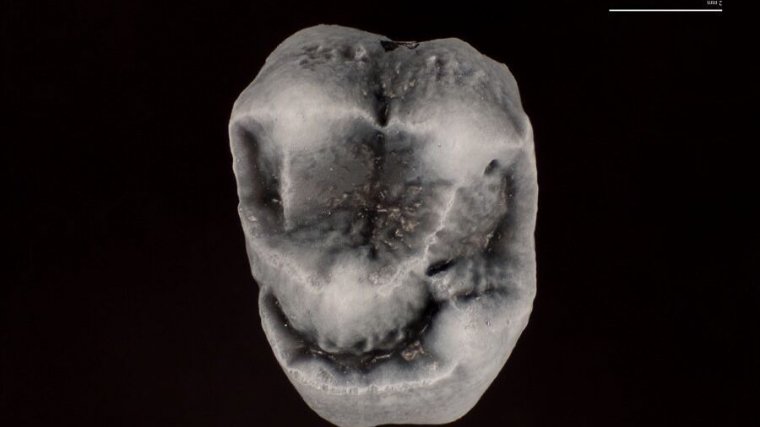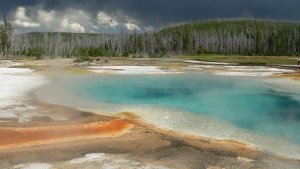| News / Science News |
First-ever fossil monkey found in North America
NSF | APRIL 25, 2016
Scientists have discovered the first-ever fossil evidence of monkeys from the North American landmass: a 21-million-year-old specimen that changes our understanding of the biological history of the continent.

Photograph of the upper molar of 21 million-year-old Panamacebus. ![]()
The fossil monkey is closely related to living South American monkeys, such as capuchins. It somehow made the journey from South America to North America 15 million years before there was a land bridge to travel across. The discovery adds a layer of complexity to established theories about the past movement of animals on the continents.
For a long time, South America -- after its disconnect from Antarctica -- has been thought of as an island continent. It wasn't until the rise of the Isthmus of Panama, about 4 million years ago that North and South America were connected and animals could migrate between the continents -- a major event known as the Great American Biotic Interchange (GABI). This fossil shows us that one of the first waves of GABI happened about 12 million years before our previous record.
The new discovery raises questions about why monkeys never ventured farther into North America. One theory is that the monkeys weren't used to eating the continent's food: They were unwilling to trade South America's tropical fruits for northern acorns.
The fossil monkey -- a new genus and species, given the name Panamacebus transitus -- is an ancient species that could help answer questions about our own future, and what might happen to other species in the wake of a changing climate and increased habitat loss.
YOU MAY ALSO LIKE





